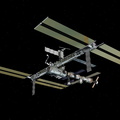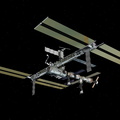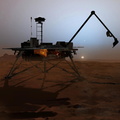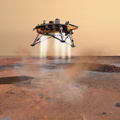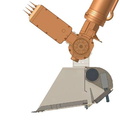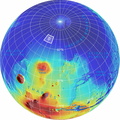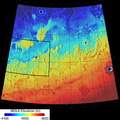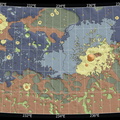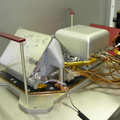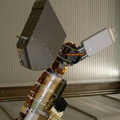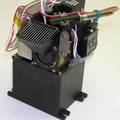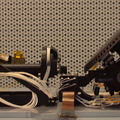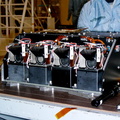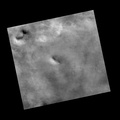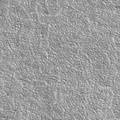
WIKIARCHIVES.SPACE
The Human Spaceflight Archive

NASA's Phoenix Mars Lander carries an instrument to heat and sniff samples of Martian soil and ice to analyze some ingredients.
Information
- Taken in
- Auteur
- NASA/JPL-Caltech/UA
- Description
-
NASA's Phoenix Mars Lander carries an instrument to heat and sniff samples of Martian soil and ice to analyze some ingredients.
The Thermal and Evolved-Gas Analyzer will study substances that are converted to gases by heating samples delivered to this instrument by the lander's robotic arm. It provides two types of information. One of its tools, called a differential scanning calorimeter (on the left in this photograph) monitors how much power is required to increase the temperature of the sample at a constant rate. This reveals which temperatures are transition points from solid to liquid and from liquid to gas for ingredients in the sample. The gases that are released, or "evolved" by this heating then go to a mass spectrometer (on the right), a tool that can identify the chemicals.
Photojournal Note: As planned, the Phoenix lander, which landed May 25, 2008 23:53 UTC, ended communications in November 2008, about six months after landing, when its solar panels ceased operating in the dark Martian winter.
- Créée le
- Jeudi 2 Août 2007
- Albums
- US SPACE PROGRAM / PROBES / MARS / PHOENIX / Rocket Preparation
- Source link
- https://photojournal.jpl.nasa.gov
- Visites
- 20
- Score
- pas de note
- Notez cette photo
- License
- Public Domain
- Modified by WikiArchives
- No (original)
- Téléchargements
- 0
Propulsé par Piwigo

